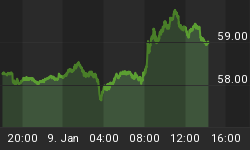In addition to monetary inflation, which I wrote about in part one of this series, another well known-driver for the higher prices in agricultural commodities has been the use of corn for the production of ethanol. That increase in the intrinsic value of corn has translated into higher prices for other agricultural commodities because land replanted for the growing of maize means less available for the production of wheat, soybeans, cotton, etc.
Much has been made recently of the increased planting of the corn crop witnessed this year. However, even with the increased production (13.3 billion bushels) demand has kept pace, consuming nearly all the added supply (12.8 billion bushels), and future demand for this commodity looks strong. Today 16% of the current corn crop is used in the production of ethanol; in just two years it will consume 30%, according to USDA estimates.
While the bio-fuel component of the agricultural story has been well promulgated, it is only a part of the story. Another reason for the bull market in agriculture is the growth of GDP on a worldwide basis along with increases in population. Global population should reach 7 billion by 2013 causing demand for grain to increase by 40% by that time. Along with strong population growth is the even more powerful phenomenon of a new middle class being created in emerging economies at a record pace, spurring GDP rates that are projected to rise at twice the historical average for the next ten years. Such wealth creation brings about a consumer who is able to demand a healthier, higher-protein diet, which is straining agricultural commodities producers who have to supply the livestock required to meet that end demand for meat.
The result of these three new dynamics: the conversion of bio-mass into bio-fuels, investment in agriculture as a hedge against inflation and an expanding, more wealthy global population has led to scarce supplies for soft commodities -- rendering stock-to-use-ratios at record lows.
Wheat, for example, is at its lowest inventory level since 1978 -- currently 112 million metric tons, down 46% since 2000! And today's demand for wheat is running at 616 million metric tons while production is estimated at just 606 metric tons for 2007; in fact, demand has outstripped supply for the last 7 years. It's little wonder, then, that prices have doubled in the last 6 months, albeit having been pressed higher recently by weather.
Which leads to what may be the most compelling evidence behind this agriculture story: weather. Or the lack thereof.
Aside from wheat in recent weeks, as mentioned above, this is perhaps the first time in modern history when the steady rise in agricultural prices has not been due to weather -- a crop freeze, drought, flood, etc. -- which is what has always been the driver of past price spikes in soft commodities. No, this rise has been slow and steady, the result of all the demand-side pressures listed above, which means agriculture may be in the early stages of a bull market that ends up looking a lot like the ones other raw materials have witnessed in recent years.
In crafting the Delta Global Agriculture UIT portfolio on which we advise for Claymore Securities, we came to a simple conclusion about how to best participate in a bull market in agriculture: by owning the marginal producers at the source and those companies most closely tied to them, like seed and ag chemical companies. Consumer food companies like Kellogg's (NYSE Symbol: K) are not agriculture stocks, in our opinion, and even the recent severe earnings warning from Tyson (NYSE Symbol: TSN) due to rising feed costs suggests such companies may not quite be in the right place for this trend.
The bullish macroeconomic environment for agriculture is likely still in its early stages. Investors should take heed of the positive changes occurring in this asset class and should look to own specific types of agriculture companies should they decide to participate in this trend.















